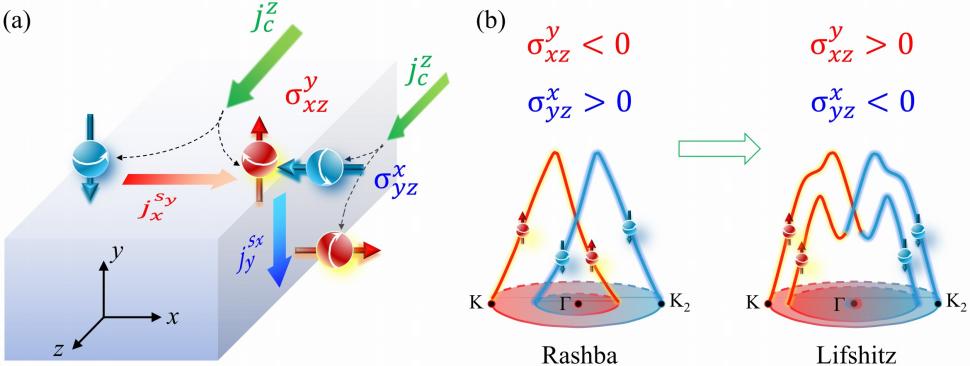The inverse spin Hall effect (ISHE), a phenomenon that converts spin current into electric current, holds significant potential for applications in power conversion and next-generation electronic devices. However, the detection of spin currents has long been a challenging task due to their weak and uneven distribution. This difficulty arises from the strong dependence of signal strength on the magnetic, conductive, and interfacial properties of materials, resulting in large experimental uncertainties. As a result, exploring the fundamental physical mechanisms behind the inverse spin Hall effect is crucial for advancing spin current detection technologies.
A research team led by Professor Zhang Jianmin and Professor Huang Zhigao from the College of Physics and Energy at Fujian Normal University has made significant progress in addressing this challenge. Building on their previous work, the team has designed a novel, structurally stable, inversion-symmetry-breaking material system based on the intrinsic magnetic topological insulator MnBi₂Te₄. Their research further elucidated the critical physical correlation between macroscopic spin current and microscopic electronic structure in this material. By tackling the longstanding issues in spin current detection, the team has proposed a specific control scheme that promotes the development and application of quantum spin memory devices.
On January 2, 2025, the team’s groundbreaking findings were published in Communications Physics, a prestigious journal under the Nature publishing group, under the title “Rashba spin-splitting driven inverse spin Hall effect in MnBi₂Te₄.” The study provides fresh insights into the field of quantum spintronics and contributes to the advancement of spin-based electronic devices.
Fujian Normal University was the sole affiliated institution for the paper, with doctoral student Guo Wenti serving as the first author and Professor Zhang Jianmin as the corresponding author. The research was supported by the General Program of the National Natural Science Foundation of China (NSFC), as well as the Distinguished Young Program and Key Program of the Fujian Provincial Natural Science Foundation (FNSF).
For more details, the original publication can be accessed via the following link:
https://doi.org/10.1038/s42005-024-01932-y

Schematic diagram of spin Hall device and modulation of different spin-orbit coupling types
Translated by ChenZiqing
Reviewed by Lin Bin
